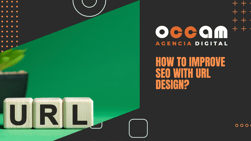how should I write a press release? Structure and tips
Index Content
You probably don't know it, but a well-structured press release can be one of the most powerful tools to spread your messages as a company or brand. Especially online press releases, which although they have similarities with the traditional ones, have some advantages that will help to better promote your message. Would you like to know how? Keep reading!
what is a press release?
If you have reached this post is because, probably, someone has encouraged you or you have read somewhere that press releases are a good communication strategy for companies. At the same time, you are thinking that you don't know where to start because you don't have any journalistic knowledge. Don't worry! Let's go step by step.
First of all, it is important to know what a press release is and to be able to distinguish it from articles (post) or news. In a simple way, we can say that a press release is nothing more than a document of no more than two pages (preferably one) with which we present important information or news about our company or business to the media.
Once this document has been drafted, it is sent to the media so that they can evaluate it and publish it.
The objective of a press release is clear: to get our project in the press, to be talked about in articles and to end up publicising our brand in one way or another.
Depending on what we want to make known to the media with our press release, we will talk about one type of document or another. It is important to differentiate them in order to know how we should present each one of them.
We can talk about:
- Product press release: This is the most common and the most commonly used when we are a brand that wants to promote a new product or service and present it to the media.
- Press release for an event: It is used for presentations, conferences, fairs, markets, pop-ups, celebrations, award ceremonies, etc. Related to our brand and that we want to promote so that new clients can attend, for example.
- Press release of a service: When there is a lot of competition in our sector, being the first to launch ourselves in the media in a specific service (software experts, for example), will open many doors to position ourselves as a reference in the eyes of the audience.
- Press release of an organisation: With this we will publicise the launch of a new project carried out by our company.
In the same way, whatever type of press release it is, all of them are informative and serve to establish a first contact with the media so that they can evaluate it and publish it. Press releases, once written, are directly sent to the media where they will evaluate characteristics such as: the newsworthiness of our information, how attractive it can be for the public, how to relate it to an interview or news item, etc.
For this reason, it is important that as well as being attractive and innovative, our press releases must have a good structure.
Structure of a press release
- Header: First of all, when we write a press release that we are going to share with the media, it is important to label it as such. This way, the first thing that those in charge of receiving it will see is that it is a press release and they will not consider it as a simple advertising document to which they will not pay interest. Therefore, the first thing we must include in the right header of our document are the words: "press release" accompanied by the logo of our brand.
- Headline: Once we have added the press release tag in our header, we must place the headline of our information. The headline should be a short and direct phrase that summarises the most newsworthy part of our press release. It is recommended that it does not exceed 10-12 words and that we include in it some of our "keywords" related to SEO positioning.
It is important that the headline is written in slightly larger letters than the rest of the text or even in bold, but never in capital letters or italics.
- Highlights: They are not mandatory in the structure of our press release. In fact, many brands and companies do not use them when writing theirs, but if we know how to use them, they can be very useful. They are placed between the headline and the rest of the text and are usually two or three sentences that highlight the main ideas of the information and encourage the reader to continue reading.
- In some cases, if the highlights are included, thelead-in is not included. However, the lead-in is obligatory in our structure. The lead-in is a summary of between 3 and 5 lines of the highlights of our press release.
The lead-in will serve to slightly expand the headline, but we must not forget to use a direct, clear and precise style so as not to lose the attention of our addressee.
The lead is also usually written in bold and in a slightly larger font than the body of the article but smaller than the headline. It is advisable to include keywords to improve the positioning in search engines.
- Place and date: In many cases, the place and date on which our press release is issued are already indicated in the lead-in, but if this is not the case, it is advisable to do so before starting the body of the release. Then, after the lead-in, the date and place are aligned to the left, for example: "Madrid, 17 June 2021".
The place is not the city where we are, but the city where the headquarters of our company is located. In other words, if we work with a communication agency in Barcelona but our company is in Toledo, we can use Toledo.
With regard to the date, we must put the date of the submission, which will help the media to prioritise the information and know when they can publish it.
- Body: Develop what is stated in the headline. If it is a short press release, it should be between 300 and 500 words: around three or four paragraphs of four or five lines each.
The body text should follow the journalistic pattern of the inverted pyramid, i.e. the most relevant information at the beginning and the least relevant at the end. In addition to showing the information in order of importance, it is important that it answers the 7 key questions: what, who, when, how, where, why and what for.
In the body of the article we will continue to use a direct and clear style where short sentences are the most important. It is advisable to include a quote from someone responsible for the company as long as it can add value to the content. The body of the article should normally be written in 11 or 12 point font and highlight some words in bold, without overdoing it, in order to capture the media's attention at the first glance.
- Note to the editor: Just after writing the body of our press release we will leave a space to include the section of note to the editor also called "About...". After this we will leave our data, what we are and what we do. This way the media will be able to locate us. This information must be brief, also in a direct style and we must write it in a slightly smaller font than the body (10 points). In addition, we must include the complete URL of the corporate website of our brand.
- Contact information: This is the last section in the structure of our press release. Here we will put the contact details that we want the media to use to get in touch with our brand. You must provide the following information in a simple way:
- Name of the spokesperson who represents the company to the media.
- The position he/she holds in the company.
- Name of our company.
- Our company telephone number and the telephone number where you can contact our spokesperson directly.
- E-mail address.
- URL of the company's website.
It is important that our press releases are well structured as this way we will make the media participants in our project and they will know in a very simple way what we want to communicate. If they understand our purpose well, it will be much easier for them to publish our information and give greater visibility to our company.
if you have something to communicate, do it through a press release and gain visibility for your brand! Remember that what is not communicated .... does not exist.





